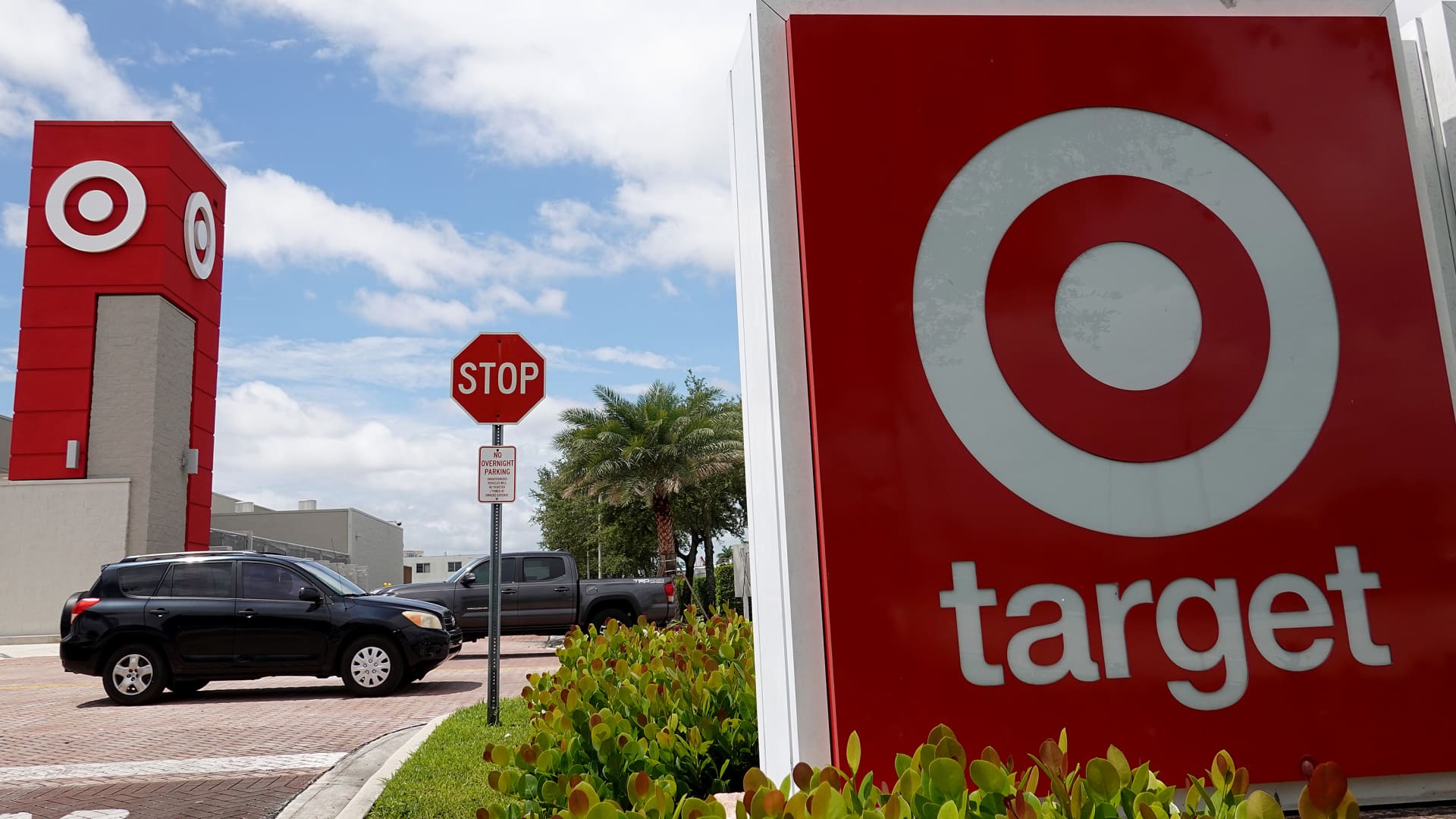Products You May Like
Target on Wednesday said its quarterly profit fell nearly 90% from a year ago, as the retailer followed through on its warning that steep markdowns on unwanted merchandise would weigh on its bottom line.
The big-box retailer missed Wall Street’s expectations by a wide margin, even after the company itself lowered guidance twice.
Yet the company reiterated its full-year forecast, saying it is now positioned for a rebound. It said it expects full-year revenue growth in the low- to mid-single digits. Target also said its operating margin rate will be in a range around 6% in the second half of the year. That would represent a jump from its operating margin rate of 1.2% in the second quarter.
Shares of Target fell about 2% in premarket trading.
Chief Financial Officer Michael Fiddelke defended Target’s aggressive inventory efforts. He said the retailer had to move swiftly, so it could clear the clutter, gear up for the holidays and navigate an economic backdrop clouded by inflation.
“If we hadn’t dealt with our excess inventory head on, we could have avoided some short-term pain on the profit line, but that would have hampered our longer-term potential,” he said. “While our quarterly profit took a meaningful step down, our future path is brighter.”
Here’s how Target did for the three-month period ended July 30, compared with Refinitiv consensus estimates:
- Earnings per share: 39 cents vs. 72 cents expected
- Revenue: $26.04 billion vs. $26.04 billion expected
Target has had a sharp reversal of fortunes over the past two quarters. After posting quarter after quarter of eye-popping sales numbers during the pandemic, it has seen clothing, coffee makers, lamps and more linger on the shelf – and then get kicked to the clearance rack. Some of that excess merchandise is the same stuff that sold out during earlier parts of the pandemic, when shoppers snapped up home decor and loungewear.
The turnabout forced the big-box retailer to cut its profit outlook twice, once in May and then again in June, and to pledge to move quickly to get its inventory level to a healthier place.
Inventory was still high, though: $15.32 billion at the end of the second quarter, compared with $15.08 billion at the end of the first.
But CEO Brian Cornell said it is a more favorable mix, as Target leans into high-frequency categories like food and household essentials along with popular categories like seasonal merchandise. It canceled more than $1.5 billion of orders for discretionary categories with lower demand.
Fiddelke said the inventory number is larger because of cost inflation and receiving inventory earlier to make sure Target is ready for the holidays.
In the second quarter, the company’s net income fell to $183 million, or 39 cents per share, from $1.82 billion, or $3.65 per share, a year earlier.
Total revenue rose to $26.04 billion from $25.16 billion a year ago, driven partially by higher prices due to inflation.
Quarterly profits got squeezed in many different ways. Sales of a lot of merchandise became less profitable as it got marked down. Freight, transportation and shipping costs rose, as fuel prices increased. And the company had to add headcount and cover more compensation in distribution centers as it dealt with a glut of extra stuff.
A cautious approach
Big-box rival Walmart said Tuesday that it had seen a marked shift in consumer behavior, as even wealthier households sought deals on groceries and essentials. The company told CNBC that about three-quarters of its market share gains in food came from households with an annual income of $100,000 or more.
Target, on the other hand, said it is not seeing as much inflation-fueled change. Sales by unit grew in all five of its major merchandise categories, with particular strength in two categories: food and beverage, and beauty and household essentials.
Even as profits fell, comparable sales and traffic rose.
Comparable sales, a key metric that tracks sales online and at stores open at least 13 months, grew 2.6% in the second quarter, on top of 8.9% growth last year. That fell just short of estimates, which anticipated a 2.8% increase, according to StreetAccount. At Target’s stores and on its website, traffic increased 2.7% year over year.
Fiddelke, the CFO, said the traffic growth is proof that shoppers still have spending power and will help Target deliver on its rosier profit outlook for the back half of the year.
“The resilience of that strong guest response positions us well, even if I can’t predict every curveball that might come at us in the fall season,” he said on a call with reporters.
Fiddelke said consumers vary by geography and income level, and they seek value in different ways. For example, some are buying bigger packs to save more per unit or trying one of Target’s lower-priced private labels instead of a national brand.
Cornell said Target is watching consumer spending closely. He said it is stocking up on popular items and ordering less of goods that shoppers may skip over.
“We’re going to take a very balanced approach,” he said, making sure to “plan cautiously” in discretionary categories where the company has seen shifts in behavior.
As of Tuesday’s close, Target’s shares are down about 22% so far this year. Shares closed Tuesday at $180.19, rising nearly 5% that day after Walmart beat earnings expectations.
This story is developing. Please check back for updates.

